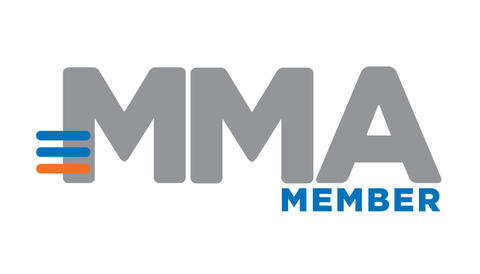October 27, 2008
A pilot on how to use customer data to personalize advertisements in the Norwegian market (Aspiro Mobile Marketing & Telenor)
If advertising is a must, please personalize! A pilot on how to use customer data to personalize advertisements in the Norwegian market
Brand
The pilot study was carried out by Telenor in cooperation with several external partners.
Category
The pilot investigated white label mobile search service in combination with personalized advertisement by using customer data from Telenor Norway.
Agency
Aspiro Mobile Marketing (Norway).
Vendors
The pilot setup was a white label search solution with advertisement, where Telenor and key selected partners provided technical solutions, search service content and advertisement campaigns in a true eco-system in order to resemble a real-life service solution for approximately 200 Norwegian pilot users.
The white label mobile search solution had a federated approach, where the results were grouped in 6 different search categories: Wikipedia, Mobile Index, Pictures, Games, Music, Directory Services.
Advertisement banners were placed in the search and result pages, where the advertisement campaigns were then ‘personalized’ by using Telenor customer data and search keywords to improve targeting of the advertisements towards the pilot users.
Technical vendors:
MCN – is a global federated mobile search management and search merchandising company, providing a ‘white label’ federated mobile search platform for the pilot, including keyword and category based ad targeting integrated with the chosen federated ad server from MADS as well as Telenor’s CRM system.
MADS – is a mobile marketing technology company offering integrated multi-channel mobile profiling and ad server solutions, providing the platform for campaign management in the pilot.
Telenor Norway – is the largest provider of telecommunication services in Norway, providing customer data from their mobile customer database.
Search service content providers
Aspiro – is a Nordic provider of mobile entertainment and mobile marketing solutions, providing music, games and pictures for the pilot.
MCN – provided search service content such as Wikipedia (Wapedia) and Web indexes (Taptu).
Opplysningen 1881 – is a Norwegian based provider of directory services, providing directory content services in the pilot.
Advertisers
DNBNor – is one of the largest banks and provider of financial services in Norway, providing campaigns for foreign currency and youth save program in the pilot.
Norsk Tipping – is the Norwegian state betting company (only legal betting company in Norway), providing mobile betting campaign in the pilot
StarTour – is one of the largest providers of charter tours in Norway, providing campaigns for leisure traveling.
DFDS – is one of the largest providers of sea cruise services in Norway, provided campaign for their sea cruise offerings.
Opplysningen 1881 – is the largest provider of directory services in Norway, provided campaigns for their mobile handset application on directory search services
Telenor – Providing advertising on selected value added services.
Region
The pilot was conducted in the Norwegian Market.
Timeline
The Pilot lasted from June 1st to July 31st. The pilot period was divided into two periods: 1st to 15th of June, where the pilot users were given tasks to solve using the new mobile search service. The second period lasted from June 16th to July 31st , where the pilot users were free to use the new search service without tasks or instructions.
Results
Mobile search
Mobile search is mainly used as a substitute to PC based search when this is not available. Hence mobile search is to a larger extent based on the situation and context of the user. This creates a demand for a more targeted and vertical mobile search solution than experienced in PC based search services. This was also supported by the pilot users’ appreciation of the result categorization in 6 different categories. This approach also requires having the relevant content categories and enough quality content within each category.
The pilot was to a large extent comprised by advanced mobile users. Still, the pilot project had a lot of feedback from the pilot users reporting problems using the service due to various personal reasons (technical, access, handset). Through guiding and educating the pilot customers, positive emotions towards the service and Telenor was created. Hence, there is a potential for mobile operators to focus on educating customers to use existing and new mobile services.
Mobile advertising
The pilot investigated the users’ attitude towards advertising. In general advertisements on their mobile handset were found to be both unwanted and intrusive. However, several factors might mitigate this attitude;
· A lower invoice from the mobile operator.(or other incentives like e.g coupons)
· A match of advertisement and the interest of the user
· A match of advertisement and the situation/context of the user
· The use of humor
Personalization of mobile advertisements
The pilot also touched upon personalization of advertisements based on search keywords, age, gender and place of residence. The pilot gave indication that personalization may motivate customers to click on advertisements in the search service. (increased Click Through Rates for the personalized ads).The number of pilot users and the log data captured are however too small to support any significant findings in this area.
Summary
The Telenor pilot did investigate both mobile search and advertising by setting up an eco-system of mobile search & advertisement platforms, advertisers and content providers into the search service.
Through the pilot, Telenor found that Mobile advertising is a part of multi channel campaigns that still is in a very early stage of business development. The tools for mobile advertising must be improved in terms of functionality, both from the vendor side, but also in terms of the mobile operator’s processes, competence and the regulatory boundaries in using customer data.
Key learning is that there is potential in providing a good contextual mobile search solution and done correctly and personalized, advertising can enhance the service and increase user acceptance for receiving advertisements.

